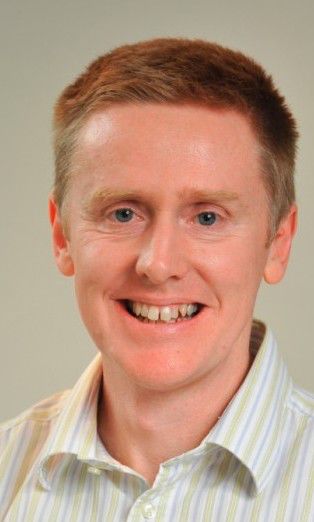 |
Dr Andrew Wong (Councillor) Dr Andrew Wong is a Neurologist and Stroke Physician working in Brisbane, Queensland, Australia. He is the director of Neurology and Stroke at the Royal Brisbane and Women’s Hospital. His clinical and research interests are focussed on stroke, which was the subject of his PhD. He is also actively involved in education; apart from presenting at local and national meetings, he organises various educational events for Queensland neurology registrars and consultants. |
| |
A/Professor Henry Ma (Councillor)
Dr Henry Ma is a stroke neurologist at Monash Health. He is also adjunct senior lecturer in the Acute Stroke and Imaging division within the Stroke and Ageing Research Group (STAR) in the Dept. of Medicine, Southern Clinical School, Monash University. His PhD is on "Imaging the Penumbra in Acute Stroke" at the University of Melbourne. His special research interests are in the imaging of the ischaemic penumbra and acute stroke trials. He has published many papers on these topics and is currently the international coordinator for EXTEND, a multicentred thrombolysis trial in acute stroke. He is the Director of Physician Training at Monash Medical Centre and serves as a member of the National Examiner Panel for the Royal Australasian College of Physician (RACP) |
|
Dr Ben Clissold (Councillor)
Dr Clissold is a stroke neurologist at Monash Health and Barwon Health in Victoria, Australia. He is a graduate of Monash University and has completed his doctoral research in relation to patterns of stroke admissions to Victorian Hospitals using data linkage methods. His current clinical roles include as the head of inpatient services for neurology at Barwon Health in Victoria, one of Australia’s largest regional health services. He works in both rural and metropolitan acute stroke services at both Monash Health and Barwon Health, and is involved in providing acute intravenous thrombolysis and endovascular clot retrieval. He is a member of the Victorian Stroke Clinical Network, and is actively involved in clinical trial work including the current EXTEND IV and TASTE thrombolysis trials. He also has ongoing research interests in data pattern recognition and cardiac risk factors for acute stroke and holds honorary fellow / lecturer positions at Monash and Deakin Universities. He recently joined the Victorian Stroke Telemedicine Service. |
 |
A/Professor. Bernard Yan (Councillor)
Since commencing employment in 2005 at the Department of Medicine, University of Melbourne and the Department of Neurology, Royal Melbourne Hospital, A/Prof. Yan has held dual appointments of Endovascular Neurointerventionist and Neurologist. His current administrative roles include Treasurer of the World Stroke Organization (2014 to present) and founder and organizer of the basic physician trainee workshops (2012 to present) and the Australia and China Training Initiative in Neurology (2010 to present). He has a strong academic interest in cerebrovascular disease research. He has published 149 academic papers in peer-reviewed medical journals. Bernard Yan is actively involved in investigator-driven and industry-sponsored multi-centre clinical trials. He is the principal investigator of several international studies in cerebrovascular diseases. One of his key research interests is in the development of portable mobile wireless sensors for the monitoring of patients with neurological diseases. These devices are designed to monitoring the motor recovery of stroke patients and the epileptic seizure frequency of patients with epilepsy. His other research interest is in the elucidation of genetically-determined responsiveness to antiplatelet therapy (aspirin and clopidogrel) in cerebrovascular disease. The test of responsiveness to antiplatelets is performed by an aggregometer. Current research effort is directed towards the clarification of antiplatelet responsiveness and genetic polymorphisms. |
|
A/Professor. Andrew Lee (Councillor)
|
 |
Professor. Mark Parsons (Councillor)
Prof Parsons is a post-doctoral researcher, whose work using magnetic resonance and CT imaging techniques to study stroke pathophysiology and new therapeutic approaches is internationally recognised. He has published a number of first author papers in prestigious international journals, three of which have been keynote publications in the high impact Annals of Neurology, each accompanied by an editorial. Prof. Parsons PhD thesis detailed the use of modern, multimodality MRI techniques in acute stroke, from which he published several first author papers in high-impact international journals. He had particular interests in the effects of thrombolysis on the ischaemic penumbra, showing that intravenous tPA salvaged significant brain tissue in this critical region and these benefits correlated with improved clinical outcomes. Prof. Parsons has also demonstrated the ability to translate fundamental research in the laboratory and clinic into solutions with direct practical application that can be incorporated into clinical practice. He has experience in the re-design and evaluation of health systems, often a critical step in the implementation of complex therapies such as stroke thrombolysis. Prof Parsons led the development of an ambulance protocol in the Hunter Region for the rapid identification, pre-hospital notification, and rapid transport of potential thrombolysis patients to a specialist stroke centre. This protocol led to a substantial increase in patients treated with thrombolytic therapy in the Hunter and on the Central Coast. |
 |
Professor. Stephen Davis ( Patron)
|